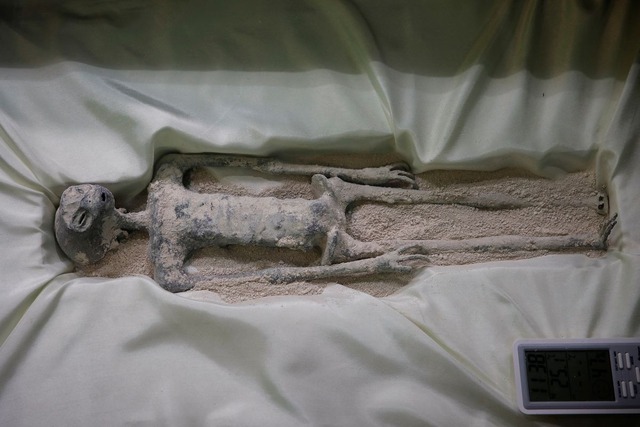The Mystery: Alien Mummies in Nazca
In recent years, several alien-looking mummies discovered in the Nazca region of Peru have made headlines worldwide. With elongated skulls, strange facial features, and three-fingered hands, these mummified bodies sparked speculation about extraterrestrial life and ancient alien contact.

However, the truth behind these figures is far from science fiction and far more troubling.
Scientific Findings: Fabricated From Human and Animal Bones
Investigations by Peruvian archaeologists and forensic experts, including Dr. Flavio Estrada, have revealed a disturbing truth. The so-called alien mummies were not real beings but modern forgeries. These figures were constructed using human remains, including bones of children, along with animal bones from species such as llamas. They were held together using modern adhesives like epoxy resin. Some even contained plastic and electrical wires.

These are not ancient relics but fabricated creations made to deceive.
Ethical Horror: Desecration of Human Remains
Dr. Estrada has condemned the forgeries as both scientifically fraudulent and morally repugnant. Real human bones were dismembered and reassembled to mimic something unnatural. This act is not only a grave violation of scientific integrity but a deep disrespect toward the dead. Many of the remains were likely obtained through illegal grave robbing and trafficking of cultural heritage.
The Role of Misinformation and Exploitation
Despite clear scientific evidence, false information about the mummies continues to spread across social media and conspiracy-based platforms. Public presentations and videos continue to promote these fabrications as proof of extraterrestrial life, misleading viewers and damaging the credibility of genuine archaeological work.

Conclusion: A Lesson in Truth and Respect
The alien mummy case in Peru is not a historical breakthrough but a troubling example of pseudoscience and human exploitation. It reminds us that archaeology is not about fantasy or spectacle. It is about truth, respect, and understanding our shared human past. Protecting the dignity of the deceased and preserving cultural heritage must always come before sensationalism.

